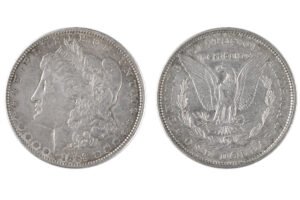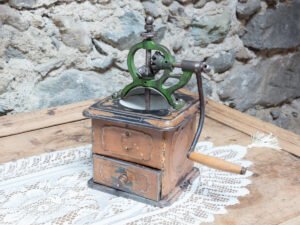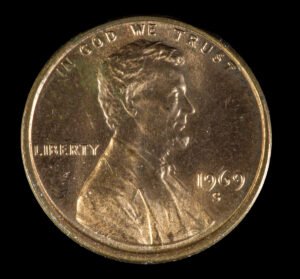We all have spoons at home, right? Our daily ones are obviously plain. But not your mom’s ‘not-for-use’ spoons! In fact, you’ll get all sorts of old and fancy silver spoons there! And, if your mom lets you resale those, trust me, you can get thousands right away!
But not every old spoon is this expensive; only the vintage models sell big! But how do you know if your spoon’s truly vintage? Well, at Antiques Know How, there’s no room for confusion! So we made a step-wise guide to help you value your item yourself!
Key Takeaways
- Antique spoons with hammered edges, grooved handles, and deep bowls are the most expensive ones with an old, handcrafted make.
- Most antique spoons are made from silver, iron, or wood. But you can even get brass or stone ones for high value.
- If you want rare or branded spoons, check out their hallmarks and natural bird patterns. Most might even have jewels and historical figurines on the handles!
- Get short apostle or caddy spoons for high returns. You can also pick metallic gray or brown ones if you want them colored.
How Do You Know If You Have an Old & Antique Spoon?

Take an inch scale and measure your spoon’s thickness. If it’s 4-5 mm thick, it’s old and handmade, valuing $600 – 1000. But if it’s 2-3 mm wide, it might be new and cheap, costing up to $500. And if you see any natural motifs, you can hike its cost further!
But it’s not just the motifs; see if you spot the following vintage features:
- Sealed or flattened tops, large bows, and carved trenches with a slight back fold
- Raked ridges and grooved handles with nickel lining and zinc sides
- A set of 12 spoons with stamped collars and ferrules
- Hand-beaten bowls with chasing or engraving signs and hallmarks
- Figurine-shaped grips with abstract bowls and necks
How Did Antique Spoons Evolve?
What do you think were the old 1500s spoons made from? Wood? Metal? Well, it was simple flint and ivory! So needless to say, these were carved and had some intricate hieroglyphics. But their natural materials decayed with time! So, you won’t get these today!
Things turned a new leaf in the 1700s when people had enough of heavy stone spoons. So, makers used wood and cast metals. They also flattened the bowl and edges to fit people’s mouths. And since makers made them by hand, they had less produce and more demand!
Then, the 1800s and 1900s were the eras of machines! So, it’s pretty obvious that you’ll see molded steel spoons here! Branded, luxurious spoons will also be common. So, you can get some jewel-studded or carved spoons from this era!
5 Types of Antique Spoons & Their Value Guide
We all know our regular tablespoons and teaspoons. But antique spoons had five more types based on their uses. Let’s explore those antique spoon types and their costs!
1. Apostle Spoons

Apostle spoons are short, round bowl spoons for sifting sugar and flour. So, you might find them deep and flat for easy cleaning! You’ll also see some mesh and snake carvings on their bowl backs and handles.
And, if you want to check your set’s price, see if it has a master spoon with cross motifs. If yes, then you can price it up to $1200. Otherwise, $700 – 800 is good!
2. Berry Spoons
Just as the name says, berry spoons are for eating berries. But they are not like your regular skewers! In fact, these have round and grooved bowls to hold the berries in place. So, check if the spoons have gilded yellow bowls and silver handles for an old make.
Also, don’t forget to count the berry carvings! Like, you roughly get about $100 for one! So, your berry spoon might cost $400 – 1500!
3. Caddy Spoons

If you want a $2000 value artifact, a caddy spoon is best! And to spot one, look for a spoon with short, 3-4 inch handles and shell bowls. You can also see if it has scooping and duty marks to verify the brand! Leopard heads or colored handles will also be there!
4. Egg Spoons

If you see a long spoon with a shield-shaped bowl, it’s an egg spoon! Most of them even have diagonal chisels on either side! Plus, these have carved Irish or mesh designs that raise the value to $1200. And, if you see any split tops, you can raise the cost by 5 – 6%.
5. Medicine Spoons
You might have seen the typical covered baby spoons! Well, medicine spoons look the same but have silver push-down stems and rods. Plus, they have long handles and hinges. So, they fit old medicine bottles easily! Also, look for hand enamels, which raise the spoon cost to $900.
7 Quick Factors to Identify & Value Vintage Spoons
Did you figure out the type and base cost from the list above? If yes, let’s jump to other factors like antique spoon age, material, and more!
1. Antique Spoon’s Date & Age

As an antique expert, I have found people run after the 1500s bone spoons. No doubt they are precious. But the real ones are only in museums! So, if your shop shows you some bone spoons, it might be a scam! I suggest getting the real, post-1700 ones for your collection.
If you want handmade antique spoons, pick the 1700s models. If you want the branded ones, go for the 1800s. But if you want usable ones, the 1900s spoons are perfect!
And hey! You don’t need to rush to an expert to date your spoon; check the tips below!
How Do You Spot a 1700s Antique Spoon?
Does your spoon have jagged edges, scooped bowl, or a hammered texture with sculpted necks and motifs? If yes, it must be a 1700s spoon. You can even look for ladle-like handles with shell bowls and grooved edges.
Also, check if their bowls are a bit yellowish. If yes, they might be old fruit serving spoons, costing $1200 – 1400. If not, those might be regular tablespoons costing $800 – 1000.
How Does an 1800s Spoon Look?
Famous brands made most 1800s spoons! So, in this era, you see all those long, jewel-studded novelty spoons. Most might even have unusual – fish or bird shapes and pierced bowls, costing up to $2000. Also, look for brand marks and logos to spot them!
How Do You Check an Antique 1900s Spoon?
Check if your old spoon is a thick, fancy version of a typical teaspoon. Also, see if it has a shallower bowl and a tilted handle. If yes, it’s a 1900s spoon. Here, if your spoon has round or bulgy ends, it costs $300 – 400. But if it’s pointed, it values up to $450.
Another way to know your spoon’s age is to track the hallmarks! So, check your spoon’s handle and follow the mark from our table:
| Year | Age | Hallmark | Average Valuation |
| 1700 – 1800 | 323 years | EP (Electroplated) | $900 – 1200 |
| 1700s | 323 years | BP (Britannia Plate) | $800 – 1000 |
| 1800s | 223 years | EPNS (Electroplated Nickel Silver) | $650 – 800 |
| 1800 – 1900 | 123 years | EPBM (Electroplated Britannia Metal) | $500 – 600 |
Pick spoons with Irish hook ends, curved necks, and deep bowls for an old make.
2. Antique Spoon’s End Shape

We all love spoons with round and smooth spoon ends! But what if your antique spoon is flat or chiseled? Well, then, you can hike its value by 10 – 12%. And if you see any natural, dog, or rat ends, it’s even more precious! But these may hurt your fingers!
And here’s how an antique spoon’s value changes with the price!
| Old Spoon’s End Shape | Average Valuation |
| Flat / Straight Ends | $1500 – 1700 |
| Dog Nose / Chisel | $1300 – 1500 |
| Rat Tail / Grooved Ends | $1000 – 1200 |
| Petal Shaped / Pointed Ends | $800 – 900 |
| Curved / Spiral / Arch | $500 – 600 |
| Round / Bulging Ends | $300 – 400 |
Get spoons with a Celtic point, Hanoverian, or Fiddle pattern for the best returns.
3. Antique Spoon Materials

Get a digital caliper and measure your spoon’s neck. If it’s 15 – 18mm thick, you might have Mughal-era stone spoons. If it’s 13 – 14mm thick, you have a wooden spoon! And you can value such spoons up to $1500.
But if the thickness is just 4 – 5mm, it’s a metal spoon! Now, rinse it with vinegar and check the color. If it’s blackish, it might be a cast iron or steel spoon. But if it looks gray and textured, you might have a precious silver spoon!
Now that you know your spoon’s material, let’s jump to the values:
| Old Spoon’s End Shape | Average Valuation |
| Stone – Marble, Agate, Jade | $3000 – 3200 |
| Hardwood – Maple / Cherry | $2000 – 2500 |
| Softwood – Pine / Cedar / Fir | $1000 – 1200 |
| Cast Iron & Alloyed Steel | $1200 – 1500 |
| Brass, Bronze & Silver | $2500 – 3000 |
| Stainless Steel & Plastic | $100 – 120 |
Avoid using silver polishes to clean your spoon as they might devalue it by 5 – 6%.
4. Old Spoon Brands

If you have a rusty spoon, you might find it hard to check the material! So, in such cases, see if there are any engraved letters on the spoon’s handle. If yes, it’s a branded spoon. So now, you simply have to check the brand’s catalog for its price!
Here are some vintage and easy-to-get spoon brands:
| Old Spoon Name | Manufacturer | Marks to Spot | Average Valuation |
| Sterling Silver Berry Spoon | Thomas & William Chawner, 1700 | T/W.C/C, T.C/W.C & W/TC/C | $850 – 900 |
| Georgian Silver Spoon | William Fearn | W+F, WF | $700 – 800 |
| Silver Basting Spoon | Charles Eley | CE | $500 – 600 |
| Georgian Spoons | Mary Elizabeth Sumner | MS | $300 – 400 |
5. Old Spoon Patterns

Antique collectors also look for fancy spoons for the best returns! So, if your spoon has carved historical places or people, you can hike the cost up to $500. Similarly, if the spoon has floral or Art Nouveau patterns, it costs $300 – 400. But if it’s plain, it’s new and cheaper!
6. Rare Antique Spoons
Old, branded spoons fetch good value! But you know what’s better? Any abstract or rare pieces! So, if your spoon has sculpted birds or flowers, or if it shines with jewels, you’ll get the best returns of them all!
Similarly, if your antique spoon has royal or religious origins, you can hike its value by 10 – 15%. Want to know about some exclusive, collectible spoons? Here’s a list!
| Rare Vintage Spoon’s Name | Valuation |
| Bird on Nest by Whiting | $1600 |
| Raphael by Alvin | $5000 |
| Japanese by Tiffany & Co. | $1800 |
| Chrysanthemum by Durgin | $2500 |
| Hanoverian Pattern by Zacariah | $1800 |
Never buy any chipped or broken spoons, as they literally sell for half the price.
7. Vintage Spoon Colors
You get vintage spoons in five colors – black, white, brown, and metallic gray or gold. Of these, metallic gray or gold spoons cost the highest, up to $500. Next are the brown ones, valuing $200 – 300. And the oxidized black or white ones are the cheapest, up to $100.
How Do You Store Antique Spoons Properly?
Dry your old spoons with a blow dryer and place them in a fabric-lined box or drawer to save them from rust. You can also wrap them with cotton towels or felt to absorb the extra moisture.
How Can You Tell If an Old Spoon Is Silver or Silver Plated?
Dip your old spoon in vinegar and brush it lightly. If it turns yellow or brownish, it’s a silver-plated spoon. But if it shines and looks gray, it’s solid silver!
How Do You Clean Antique Spoons?
Create a paste of white vinegar, baking soda, and water, and scrub the spoon gently! Next, pour some anti-rust solution on all the affected parts. Now, you just have to rinse it, dry it, and store it properly!
Antique spoons are still very much usable! That’s because they have whole silver bodies and hand-beaten or hammered edges. But what makes them different are their carved handles, hallmarks, and shapes! So make sure you pick the best ones from our guide above!
And if you want a full antique kitchenware set for yourself, jump onto our guides on ‘antique knives,’ ‘old wood stoves,’ and ‘vintage glass pitchers’ for help!









